Launching the Jamie Hanna
On August 14, 2012, more than 50 fellow lobsterman, boat workers, mechanics, family, and friends gathered to witness the launching of the 55-foot research and lobster vessel Jamie Hanna. A procession of cars made the 2 mile trip to the launching ramp at Outward Bound on Clarke Island, Maine. The lead car cleared the road to make way, as the 20 ton hydraulic trailer inched along and a crew on the pilothouse roof lifted phone lines and branches. When the boat arrived at the ramp an hour later, the tide was falling and concerns were raised about whether the boat would fit between the rocks and the floating dock. With mere inches to spare the driver expertly guided the trailer down the dock, as this was by far the largest vessel ever to be launched here. With the hull finally fully submerged and the vessel floating, the owner and captain, Josh Goodwin, could finally relax. He and his wife, Shanna, proceeded to ceremoniously christen the new million dollar boat, the Jamie Hanna, named after their daughter.
This event was over 10 years in the making.
It all began in 2000, when CR Environmental, Inc. (CR) received a Fishermen Industry Grant from NOAA to train fishermen and outfit their vessels for oceanographic survey work. A training seminar was conducted in Scituate, Mass., and members of the Hull, Mass., lobster fishing community attended. Shortly thereafter, CR began to charter Hull-based vessels for turbidity monitoring during a Boston Harbor islands cable installation, whale observations during blasting activities during the Hubline pipeline project, lobster collections for the Massachusetts Water Resource Authority (MWRA), vibracore and water sampling for the Army Corps of Engineers on Boston Harbor dredging projects, and geophysical surveys for an offshore wind turbine project off Nantasket Beach, in Hull, MA. In total, 6 vessels based in Hull began making a part time income chartering their vessels for oceanographic surveys.
Many of the lobster vessels are WESMAC hulls built in Surry, Maine. The lobster boat style vessel is well suited for oceanographic operations with the large open stern and side mounted davit and pot hauler. CR routinely uses the lobster hauler for deployment of smaller geophysical sensors, sound velocity profiling, sediment grab sampling, and anchoring for vibracore operations. With the open stern, these vessels are also ideal for deploying oceanographic equipment, performing mooring operations, and equipment testing. Many of the lobstermen’s gear and vessel handling skills are also easily adapted to oceanographic survey work.
Working with CR, several of these vessels were converted to part time research vessels, as the owners began installing hydraulic winches and A-frames, over-the-side transducer booms, and benches and tables for survey electronics. At several of the early Ocean Technology Expos in Woods Hole, MA, and Newport and Warwick, RI, CR chartered the Hull vessels to demonstrate navigation, geophysical, and multibeam bathymetric systems to the oceanographic community. Clients were pleased with the vessel’s unexpected stability, utility, and capabilities relative to their objectives.
In 2005 and 2006, CR enlisted Josh Goodwin and his 42-foot WESMAC in several long term offshore monitoring programs including monitoring at several dredged material disposal sites managed by the Army Corps of Engineers DAMOS program, and pre-construction and post-construction monitoring at the Neptune gas pipeline in Massachusetts Bay. In 2008 and 2009, we performed geophysical and underwater video surveys at sand borrow sites off Nantucket Island, vibracore sampling at a potential gas pipeline terminal in Fall River, MA, and conducted geophysical and multibeam bathymetric surveys at a current turbine site in Eastport, Maine. Additionally, CR Environmental and Goodwin Marine had regular charter work with Bluefin Robotics testing their AUVs.
Following these charters with CR, Josh Goodwin took this part-time research vessel work to another level. He became proficient at running survey lines, station keeping and equipment deployment operations, developing an excellent reputation as a research vessel captain. In additional to his exceptional boat handling skills, he is capable of making quick repairs or modifications to keep an operation going. Oceanographic survey work quickly became Josh’s primary mission. The only time Josh went lobstering was to catch lunch for the scientific crew. CR’s grilling of lobsters on the back deck for clients became a routine occurrence.
Although Josh continued to make improvements to his 42-foot WESMAC, including installing a removable custom laboratory van, modification of the existing A-frame, and a repower with a more economical and reliable engine in 2010, he and CR saw the need for a larger more capable platform. We believed the practical stability limits had been reached with the 42-foot boats for offshore hydrographic and geophysical survey tasks, and a larger vessel was needed to maximize data quality in adverse sea conditions. CR’s work typically ranges from Sandy Hook, New Jersey to Eastport, Maine, where dangerous transiting and working conditions for smaller boats occurs late in the season. For data quality, safety and client comfort, in September 2010, Josh ordered a 55-foot WESMAC hull and by December the hull was transported to Clark Island Boat Works in St. George, Maine for the engine installation and finish work.
WESMACs built in Surry, Maine are the “Cadillacs” of lobster boat hulls, known for high performance while keeping the traditional down east Maine lobster boat lines. Combining a hard chine, V-bottom, and full keel affords them excellent sea keeping ability, great maneuverability, and good speed. The WESMACs from Hull were all finished at Clark Island Boat Works owned by fellow Hull native Dan MacCaffray and his son Andrew. With Dan in his 60’s and still an avid Grateful Dead fan, these boats continue to bear the instantly recognizable Grateful Dead logo. Their boats are (to quote their motto) “Built to Last”. Construction of this 55-foot WESMAC was a major undertaking. The hull had to be trailered 80 miles from Surry to St. George, Maine, and the boat shop at Clark Island was lengthened to accommodate the hull.
In this economy, it was challenging to finance the construction, but Josh, the proverbial entrepreneur, managed to find a way. In addition to the research charters and lobster fishing, he derived funding from his fleet of snow plows, sanders, waste management and boom truck services, vessel storage services, and the sale of two boats. One was the Justin Daniel (named after his son). After the BP oil spill, Josh transported this 56-foot landing craft, to the Gulf of Mexico where along with CR’s former captain, Steve Harris, it assisted in the cleanup efforts. After a lucrative six-month charter, the Justin Daniel was sold in Mississippi.
During the two year construction period, CR had multiple oceanographic charters scheduled. Fellow Hull lobstermen, Chad Mahoney, stepped up and provided his 42-foot WESMAC for this interim period. Josh and Chad quickly outfitted the vessel with A-frame, winch, and lab space, and in the fall of 2010 she began her first charter on a sediment monitoring cruise at the HARS offshore dredged material remediation site off the New York/New Jersey coast.
Over the next several months, when Josh wasn’t captaining the First Light, he was living in Maine at Clark Island Boat Works supervising and planning the layout and the construction of the Jamie Hanna. CR employees traveled to Maine to advise Josh on setting up the boat for scientific studies including layout of the cabin, design of the transducer boom, overseeing the survey for multibeam operations, and electronics installation.
The Jamie Hanna is 55 feet in length, with 18 feet of beam, and a draft of 7 feet. The vessel is powered by a 1000 HP Caterpillar C18-ACERT engine, and has a top speed of 21 knots and a cruising speed of 18 knots. It has a hydraulic bow thruster and a Northern Lights 12kW generator.
Unlike the 42-foot WESMAC vessels CR had previously chartered, the Jamie Hanna does not have the typical split-pilothouse lobster boat design. Instead this vessel has a large full-width pilothouse with the lobster station, davit, block, and pot hauler aft of the pilothouse on the starboard side. The pilothouse has a large semi-enclosed helm area, with an array of electronics, including a Furuno NavNet 3D suite consisting of a black box, radar, echo sounder, and multiple flatscreen monitors; an AIS, multiple VHF/loud hailers, and Sirius Satellite/Weather Radio.
To assist with navigation, is a PC plotter with NOAA charts and HYPACK survey software. Behind the helm on the starboard side, is a 4-person dinette, and on the port side a science station with a large 10-foot built-in bench with rack storage. Down below, there are 4 berths with DC power and LED lights, a galley with full sized stove, refrigerator, and microwave, and a full head with heated shower.
On deck, the Jamie Hanna has (2) 5000-lb capacity Pullmaster winches and can accommodate (2) oceanographic winches. The vessel has a rugged over-the-side transducer boom with fairing, a 5000-lb capacity 15-foot hydraulic A-frame, and nearly 500 square feet of open deck space. The hydraulic controls are located inside the pilothouse, rather than on deck. The Jamie Hanna underwent a pre-launch topographic survey per NOAA/NOS specifications to aid in the proper installation and calibration of multibeam systems and ancillary sensors. The transducer boom has a universal coupling with adaptors for RESON and Teledyne Odom multibeam systems to support CR’s survey contracts.
A busy fall schedule is planned for the Jamie Hanna with demonstrations of Odom’s new MB-1 multibeam system in Boston Harbor, a series of offshore RESON multibeam bathymetric and Sediment Profile Imaging camera surveys with Germano and Associates for the Army Corps of Engineers’ Disposal Area Monitoring System (DAMOS) at sites in Massachusetts and Maine, and an essential fish habitat survey using side scan sonar, underwater video, and benthic sampling along a submarine cable route in northern Maine for the U.S. Navy. CR and our clients are looking forward to the expanded capabilities of the 55-foot Jamie Hanna. This larger vessel will provide better sea keeping abilities for offshore work, and the improved accommodations will allow for 24 hour operations and longer duration projects.
On that launching day in August, more than twenty of Josh’s friends and family took the half hour shakedown cruise from the Outward Bound dock to Thomaston, Maine. The vessel surpassed 21 knots and still allowed for quiet conversations in the spacious pilothouse. We quickly realized that this boat was well worth the wait.
(As published in the October 2012 edition of Marine Technology Reporter - www.marinetechnologynews.com)



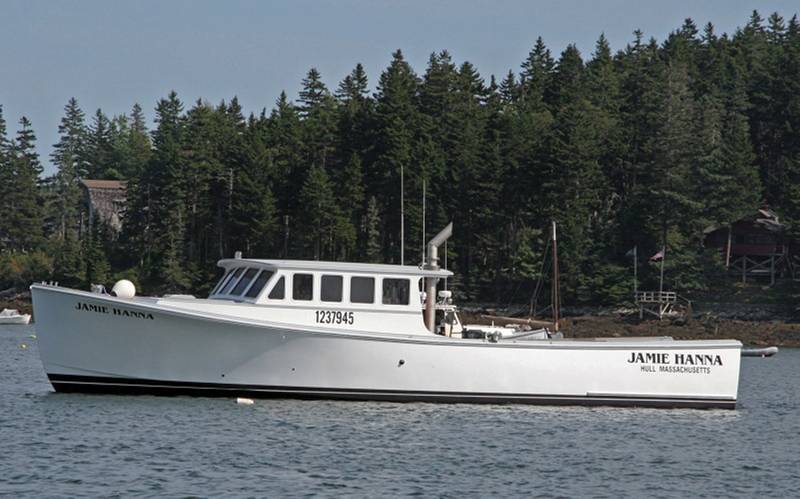

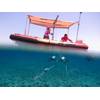
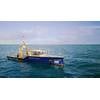

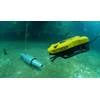
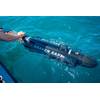
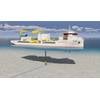





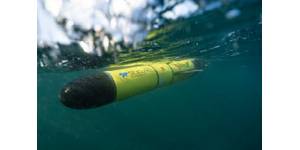
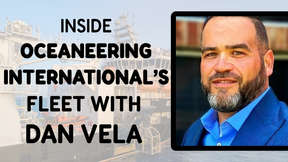
 August 2025
August 2025



